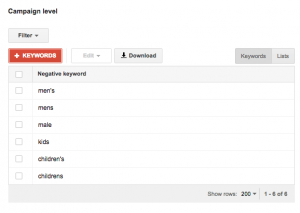Mediavine explains how AI-powered contextual advertising (and persistent IDs) will help fill the cookie gap.
Advertisers and publishers are scrambling to find alternatives to the third-party cookies which have been prime way of understanding audiences and their interests, but which are soon to be history. One alternative, which seems almost too obvious to mention, is contextual advertising.
Contextual advertising doesn’t intrude on audience identity at all: what the advertiser needs to know is what content is being consumed so that ads can be served appropriate to the audience which would consume that content. Easy, right? Also, as old as the hills. Soap operas, after all, got their name from the understanding that the audience watching them was the same audience which shopped for laundry soap.
AI-powered contextual advertising. But of course, the technology has changed, and contextual advertising can now be much more agile and precise. That was our takeaway from a conversation with Phil Bohn, SVP of Sales and Revenue at Mediavine, the full service ad management agency which has just partnered with contextual intelligence engine GumGum to apply AI to the contextual advertising space.
“The AI adds a layer of comfort for marketers,” he explained. “Yes we can say, we have three thousand food sites, and this is a food blog or a food article, but to drill down and find more information about it is where the AI comes in. Cool, it’s a baking article, but is it sweet, is it chicken? The kind of information an advertiser might be looking for.”
Brand safety monitoring. The GumGum tool is called Verity. It reads text (natural language processing) and also analyses images and metadata, in order to derive contextual data at scale (Mediavine has around 8,000 partner websites). It also looks at brand safety. “That’s the easy part, right?” said Bohn. “You can find ‘earthquake’ and rule that out as a page you want to place an ad on, but to look and know that there’s an earthquake cake, and put that into context, makes a big difference.”
Choosing GumGum as a partner was an unusual move for Mediavine, Bohn said. “We build a lot of our own products. We built our own video players for instream and outstream, we built our own wrapper infrastructure. So we had to talk about, is this something we build in house? We probably could have pulled it off, but it would have required quite a bit of resources.”
Integration with The Trade Desk’s UID. Another proactive response to the coming cookie-less world has been the development of persistent audience identities based on first party data collected with consent. One of the leading initiatives in this space has been The Trade Desk’s Unified ID (currently Unified ID 2.0), which is also embedded into LiveRamp’s infrastructure for use by SSPs and DSPs.
Mediavine announced this week that it’s bringing its proprietary Grow.me audience engagement framework to the party. The significance of Grow.me is that, although Mediavine has some enterprise clients, it tends to partnermainly with small-to-medium publishers — just a lot of them. As Bohn explained, users are much more ready to give up personally identifying information, like an email address, to consume content from a site like The New York Times than content from a blog.
“The rationale behind Grow.me is to build something open to scale — we’re going to open this up to other publishers, not just the 8,000 Mediavine sites — that will nudge people into giving their email address, and give them privacy tools to opt in and opt out,” said Bohn. “We have 1,800 publishers using Grow.me right now. We talked to The Trade Desk, and thy realize there’s a whole lot of sits they’re not getting first-party data from, and so we built this and became the first publisher to integrate with UID 2.0.” The first-party data made available is not the email address itself, but hashed data.
Mediavine also has an integration with LiveRamp. Grow.me, said Bohn, “is essentially going to add to the pool, and make the inventory available on those sites more valuable with the data attached to it.
This story first appeared on MarTech Today.
Marketing Land – Internet Marketing News, Strategies & Tips
(14)
Report Post





